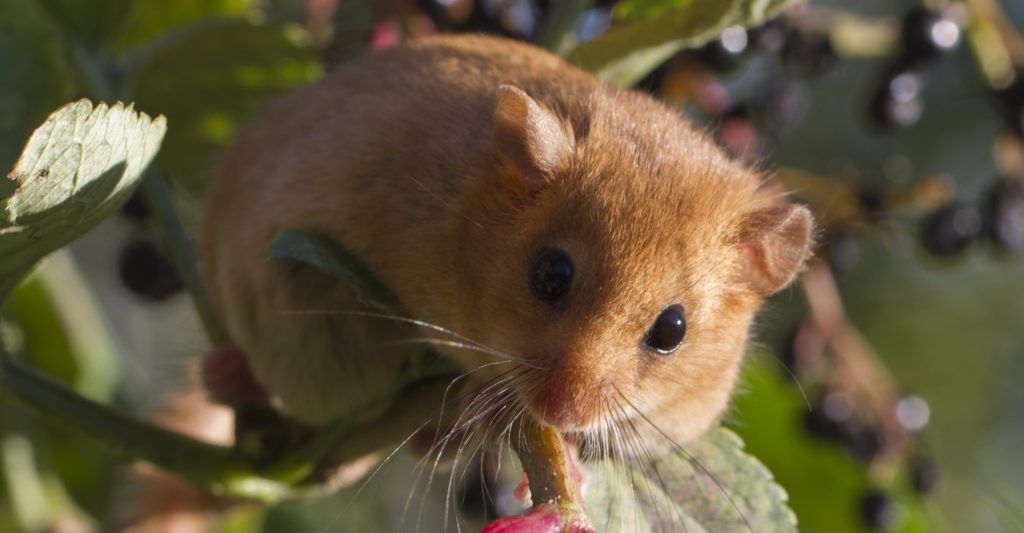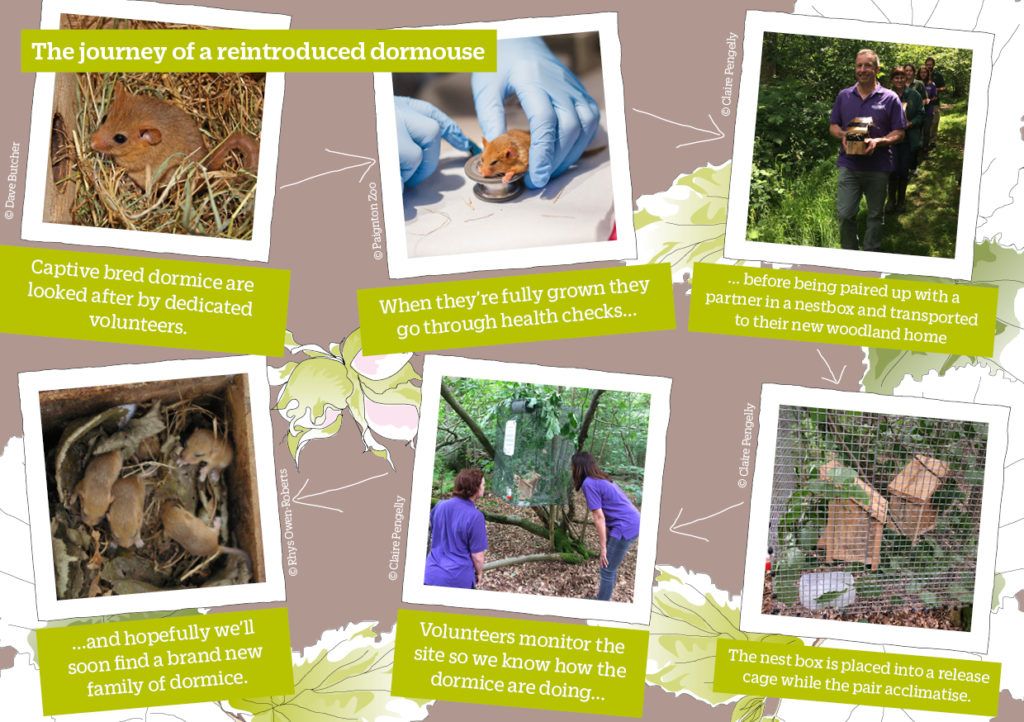‘Northern stronghold’ for rare hazel dormice created in Lancashire
This week, a unique partnership of 10 organisations are coming together in an attempt to bring hazel dormice back from the brink. 39 dormice are being reintroduced into an ancient woodland in Lancashire. This reintroduction follows the milestone reintroduction in 2021 that saw 30 hazel dormice (including the UK’s 1,000th) being released into into a woodland in the Arnside and Silverdale Area of Outstanding Natural Beauty. Now a further 39 will be reintroduced into a neighbouring woodland which has been carefully selected to support dormice. This will create a bigger and better-connected population in the Lancashire landscape.
The reintroduction is led by wildlife charity People’s Trust for Endangered Species (PTES), the National Trust, and delivered by the University of Cumbria’s Back On Our Map project, and partners.

A unique partnership
The annual dormouse reintroductions (which are part of Natural England’s Species Recovery Programme) began in 1993, and have been managed by PTES since 2000. But their ongoing success is only possible thanks to a unique partnership of organisations and volunteers working tirelessly to help bring hazel dormice back from the brink.
This year’s reintroduction will be held in a National Trust owned woodland and is also part of ‘Back On Our Map’ (BOOM) – a multispecies, landscape scale project which aims to return 10 locally threatened or extinct native species, such as dormice, to the area. BOOM is led by the University of Cumbria, Morecambe Bay Partnership and supported by The National Lottery Heritage Fund.
Prior to the reintroduction, all dormice, which are captive bred by members of the Common Dormouse Captive Breeders Group, including Wildwood Trust, undergo a nine-week quarantine and receive regular health checks by wildlife vets at Paignton Zoo in Devon and ZSL (Zoological Society of London)’s Disease Risk Analysis and Health Surveillance (DRAHS) team. Both organisations ensure that only healthy dormice are released into the wild, taking vital steps to mitigate against disease and ensuring that no parasites can be transmitted from the captive bred population to wild dormice.
A reintroduction of great importance
Hazel dormice have declined by a staggering 51% since 2000 and are considered extinct in 17 English counties. The only way we can rebuild their populations is to continue managing known habitats correctly to ensure the survival of any existing populations and to carefully release healthy, captive bred dormice into well-managed woodlands.
The woodlands have been carefully managed by National Trust rangers and volunteers for decades to ensure that they support a wide range of flora and fauna. This work has led to a diverse woodland structure which makes the chosen area the ideal habitat for dormice. This, coupled with its close proximity to the 2021 reintroduction site, a woodland owned and managed by Natural England, will hopefully create a thriving population which will spread throughout neighbouring woodlands.
Since the landmark reintroduction in 2021, BOOM has reported that the population is doing well with several juveniles born last autumn having survived the winter. Reintroducing a further population this year is another pivotal moment for all involved, particularly for BOOM volunteers who give up their time to feed the dormice in their first few months, and conduct regular checks to make sure they remain healthy.
After the reintroduction
Ten days after the reintroduction, volunteers, National Trust and BOOM staff will open the mesh reintroduction cage doors to allow the dormice to start exploring their new home. ZSL’s wildlife vets will be on hand to ensure the reintroduced population is healthy and ready for a new life in the wild.
Reintroductions are crucial to the long-term conservation of any endangered species and are vital to combatting the ongoing decline of hazel dormice. Since the first reintroduction in 1993, over 1,000 dormice (the majority of which have been bred by the CDCBG and Wildwood Trust) have been reintroduced at 24 different sites in 13 different counties across the UK, by PTES and partners. We hope this year’s dormice will thrive in their new home, and in time will meet the population we reintroduced last year to create Lancashire’s first self-sustaining metapopulation*.
Later this year there are plans to erect a bespoke dormouse bridge over the West Coast Main railway line, connecting the 2021 and 2022 reintroduction sites.
*self-sustaining meta-population (a regional group of connected populations that will hopefully form a wider population in time)
You can donate to this long term project or find out more about our dormouse conservation work here:


